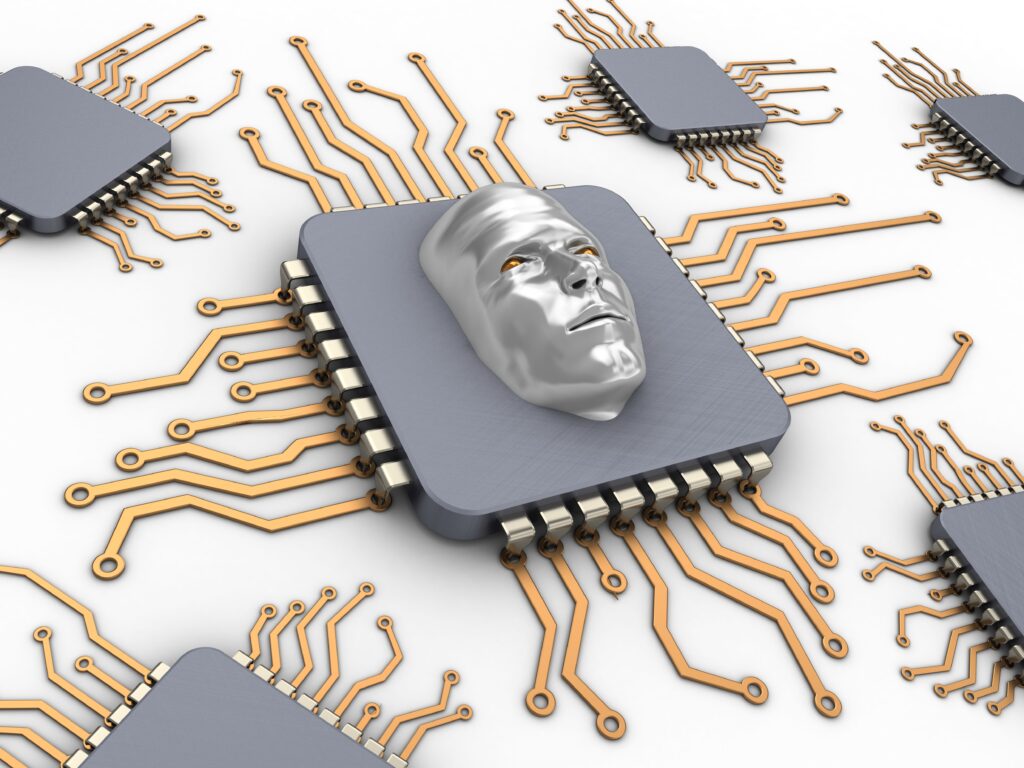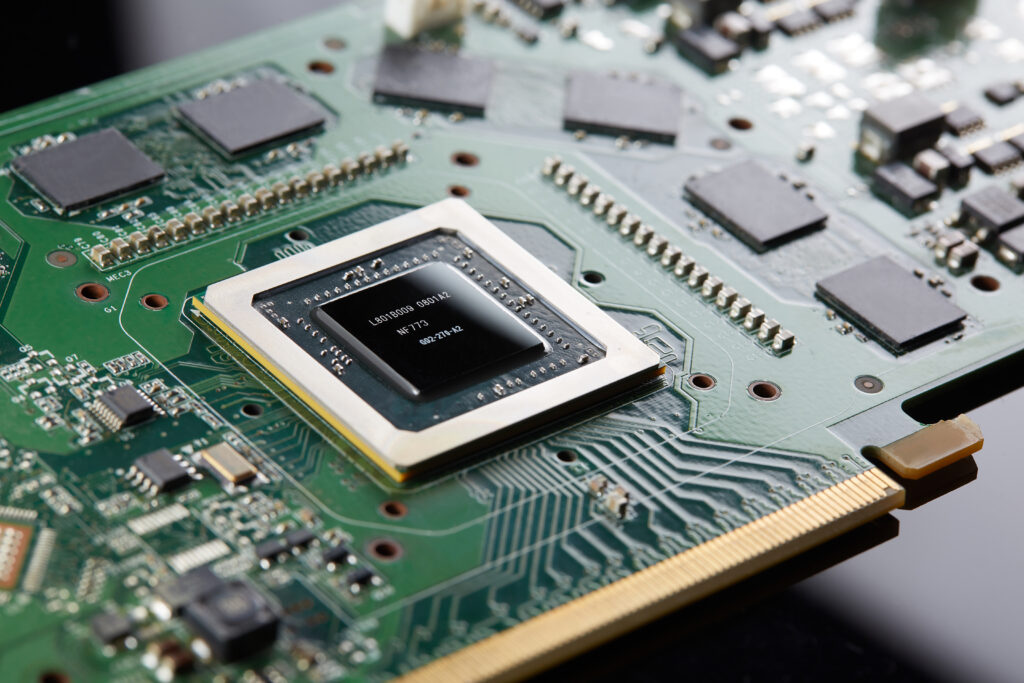
As the need for AI grows, so does the demand for more efficient and cost-effective processing power. With AI moving beyond the cloud and into edge devices and consumer products, next-generation hardware is stepping up to accelerate performance. Innovations in chip design and specialized AI processors are unlocking new capabilities, allowing advanced neural networks to run smoothly on small, low-powered devices. This hardware revolution is making on-device AI viable, enabling real-time inference and powerful capabilities on the very edge of the network. These hardware advances are game-changing for businesses seeking to embed intelligence into products or harness AI’s potential across distributed networks. New specialized AI chips deliver dramatically improved throughput and efficiency while reducing costs and energy needs. This allows transformative applications of AI at the true edge. For companies looking to capitalize on the next wave of AI, understanding these hardware innovations is essential.
The Promise of Edge AI and Approaches for Effective Adoption
Edge computing refers to data processing at the peripheral of a network, near the data source. For AI, it means models can run inferences on edge devices like sensors, phones, and vehicles without relying on the cloud. This reduces latency, improves privacy and security, and enables use cases with limited connectivity. However, edge AI also brings challenges around model optimization, data management, and updating algorithms across many devices.
Optimizing Models
To run AI on edge devices, models must be highly optimized to use minimal computing resources while maintaining accuracy. Techniques like model pruning, quantization, and compression are used to reduce model size and complexity. For example, quantizing a model to use 8-bit integers instead of 32-bit floats can reduce its size by up to 75% with little loss in accuracy.
Managing Data and Models at the Edge
With AI models running on many edge devices, data and models must be managed centrally and pushed out to endpoints. This requires robust version control, monitoring, and updating mechanisms to ensure consistency and continuous improvement. Solutions are emerging to orchestrate the deployment of optimized models, transfer learning techniques, and incremental learning methods across fleets of edge devices.
Achieving the Promise of Edge AI
When implemented thoughtfully, edge AI can enable transformative applications of artificial intelligence. However, organizations must consider how to optimize their models for edge environments, manage data and models across devices, and update algorithms in a controlled fashion. With the right techniques and tools, edge AI can open new opportunities for responsiveness, personalization, and connectivity.
Hardware Acceleration Platform for AI-Based Inference

FPGAs
Field Programmable Gate Arrays (FPGAs) are integrated circuits that can be reprogrammed to perform specific functions. FPGAs provide a flexible hardware platform for accelerating AI workloads such as image classification or object detection at the edge. FPGAs can achieve higher performance per watt compared to GPUs for these targeted workloads. Major cloud providers offer FPGA instances for customers to deploy their AI models.
ASICs
Application-Specific Integrated Circuits (ASICs) are custom chips designed for a specific purpose, such as accelerating a neural network. ASICs offer the highest performance and lowest power consumption but lack flexibility. Some companies offer ASICs tailored to running flagship AI models such as BERT or GPT-3. These chips can provide up to 100x higher throughput at a fraction of the power compared to GPUs. However, their fixed function means they cannot be adapted to new models.
SoCs
System-on-Chips (SoCs) integrate multiple components such as CPUs, GPUs, memory, and networking onto a single chip. Some SoCs, such as Google’s Edge TPU or NVIDIA’s Jetson, incorporate dedicated AI acceleration blocks. These SoCs provide high performance for targeted AI workloads in a small, low-power package suitable for edge devices. SoCs offer more flexibility than ASICs but less than FPGAs. They provide a good middle ground for many edge AI use cases.
In summary, specialized hardware innovations enable huge leaps in performance and efficiency for AI workloads. As businesses deploy more AI to the edge and into end-user devices, these platforms will be crucial to providing local AI capabilities at low cost and with minimal power draw. Continued progress in this area will help unlock new opportunities for on-device intelligence.
Advanced Hardware Innovations Enabling Efficient AI
Specialised AI Chips
As AI models have become more sophisticated, they require immense computing power to operate. General-purpose graphics processing units (GPUs) and central processing units (CPUs) struggle to provide the computational performance and energy efficiency needed for complex AI workloads. In response, major tech companies have developed specialized AI chips, known as tensor processing units (TPUs) and neural processing units (NPUs), optimized for AI tasks like deep learning. These custom chips can provide up to 100 times the performance per watt of traditional CPUs and GPUs.
Quantum Computing
Quantum computers have the potential to solve certain AI problems that are intractable for classical computers. By harnessing the properties of quantum mechanics, quantum computers can perform calculations on large datasets much more quickly. Although still in their infancy, quantum computers are being explored for use in AI, especially machine learning. Tech giants like Google, IBM, and Microsoft are developing quantum computers and software platforms to help businesses experiment with quantum machine learning.
Neuromorphic Chips
Neuromorphic chips are a type of computer chip inspired by the biological neural networks in the human brain. They contain electronic circuits that mimic the way neurons communicate with one another. These chips can efficiently perform the complex, nonlinear calculations required for AI, especially in edge environments. Because they operate in an analog fashion, neuromorphic chips do not require the high precision of digital chips, allowing them to be more compact and energy efficient. Companies such as IBM, Intel, and Brain Chip are creating neuromorphic chips optimized for AI workloads at the edge.
Advancements in specialized hardware like AI chips, quantum computers, and neuromorphic chips are bringing artificial intelligence to the edge and powering the next generation of intelligent devices. As these technologies continue to mature, they will enable AI to be embedded into an even wider range of connected products and services.
Real-World Applications and Use Cases of AI Acceleration Hardware
Artificial intelligence and machine learning techniques are enabling transformative capabilities across industries. However, many AI models demand extensive computational resources to function, which can limit their application. Next-generation hardware designed specifically for AI workloads is helping to address this challenge.
Autonomous Vehicles
Self-driving cars require onboard AI systems to interpret data from sensors and make real-time driving decisions. AI acceleration chips can provide the processing power needed for autonomous navigation without relying on connectivity to data centers. Startups like Tesla, Waymo, and Aurora are leveraging custom AI chips to enable higher levels of autonomy in their vehicles.
Smart Home Devices
Voice assistants and other smart home technologies are powered by AI models running on edge devices inside homes. AI acceleration hardware allows these models to run locally on devices rather than relying on cloud connectivity, improving response times and privacy. Companies like Anthropic, Eco bee and Nest are using custom silicon to bring more advanced AI capabilities into home environments.
Industrial Automation
In manufacturing and logistics, AI techniques like computer vision and predictive maintenance help to automate processes and gain operational efficiencies. However, many industrial environments have limited connectivity, requiring AI workloads to run on local hardware. AI acceleration chips enable deploying AI systems directly into factories, warehouses, and other industrial settings. Siemens, Bosch, and GE are leaders in developing AI solutions for industrial customers using optimized edge hardware.
AI acceleration hardware unlocks new opportunities for AI across domains by providing the computational capabilities needed for complex models to run efficiently at the edge. As costs continue to decrease and technologies improve, next-generation chips will accelerate the broader adoption of AI and its benefits to businesses and society. With custom hardware, AI can reach its full potential in any environment.
FAQs on Next-Gen Hardware for Accelerating AI at the Edge
What types of next-gen hardware are enabling AI acceleration?
Several emerging technologies are optimizing hardware for AI workloads. These include graphics processing units (GPUs), field-programmable gate arrays (FPGAs), and application-specific integrated circuits (ASICs) like Google’s Tensor Processing Units (TPUs). These chips are designed to efficiently execute the matrix multiplications and convolutions fundamental to neural networks. Some systems incorporate multiple chip types to maximize performance.
How does next-gen hardware improve AI performance?
Specialized AI chips offer major performance and cost benefits over traditional CPUs. Their optimized architectures reduce the time and energy required to run complex AI models by 10 to 100 times. This enables more sophisticated neural networks to run locally on edge devices with limited size, power, and cost budgets. It also speeds up the training of large models that would otherwise take days or weeks on CPU-only systems.
What are the benefits of accelerating AI at the edge?
Performing AI processing on edge devices like smartphones, sensors, and IoT systems brings several advantages:
•Reduced latency. Running AI models locally eliminates the delay of sending data to the cloud and receiving inferences back. This is critical for applications like autonomous vehicles, where fast response times are necessary.
•Improved privacy and security. Keeping data within the device avoids risks associated with transmitting and storing sensitive information in the cloud. This is important for health monitors, surveillance systems, and other privacy-focused use cases.
•Greater scalability. Distributing AI workloads across many edge devices reduces the computational burden on centralized cloud systems. This allows for the deployment of AI at a very large scale.
•Lower costs. Performing AI inferences on energy-efficient edge hardware minimizes operating expenses relative to power-hungry cloud data centers. This economic benefit makes locally accelerated AI accessible to more organizations and applications.
Next-generation hardware enables AI to be embedded in devices at the edge of the network. With continued progress, AI will become even more pervasive, responsive, and customized to users’ needs. Powerful, specialized chips are bringing this vision within reach.
The Verdict?
With hardware innovations enabling AI to become more affordable, efficient, and accessible, businesses now have immense opportunities to leverage these technologies in transformative ways. By deploying AI solutions at the edge, closer to where data is generated, and action is needed, companies can drive new revenue streams, optimize operations, and stay ahead of the competition. However, successfully implementing these leading-edge capabilities requires strategy, talent, and execution. Evaluate your needs, assess the options, and partner with experts who understand both the technology and your business. The future is full of potential; it is time to take the next step.
More Stories
QpiAI-Indus: India’s Quantum Leap with a 25-Qubit Superconducting Computer
QpiAI, a Bengaluru-based startup, has unveiled the QpiAI-Indus, India’s first full-stack superconducting quantum computer. This 25-qubit system represents a quantum leap for the nation’s scientific capabilities, integrating cutting-edge hardware with sophisticated software solutions.
Fujitsu, Supermicro, and Nidec Unite to Revolutionize Data Center Cooling Efficiency
In the ever-evolving landscape of liquid cooling data centers, a groundbreaking collaboration has emerged to address one of the industry's...
Microsoft Recalibrates Global Data Center Strategy Amid AI Expansion
Microsoft’s recent recalibration of its global data center strategy demands your attention. The tech giant’s decision to pause or delay projects in multiple regions while simultaneously committing billions to AI infrastructure highlights a nuanced approach to growth.
Sonim’s XP Pro Thermal: Merging Rugged Mobility with Thermal Precision
Enter the Sonim XP Pro Thermal, a rugged 5G smartphone that combines durability with advanced thermal imaging capabilities. This innovative device is designed to meet the needs of professionals across various industries, from electrical maintenance to public safety.
WhatsApp’s New Lockdown Mode: Fortifying Privacy with Advanced Chat Protections
By implementing a “lockdown mode,” this feature empowers you to restrict content sharing, disable automatic media saving, and block AI functionalities within specific chats.
Legrand Fortifies Data Center Presence with Strategic Acquisition of Australia’s Computer Room Solutions
As you navigate the changing data center infrastructure landscape, staying informed about industry shifts is essential for your operations. For...


